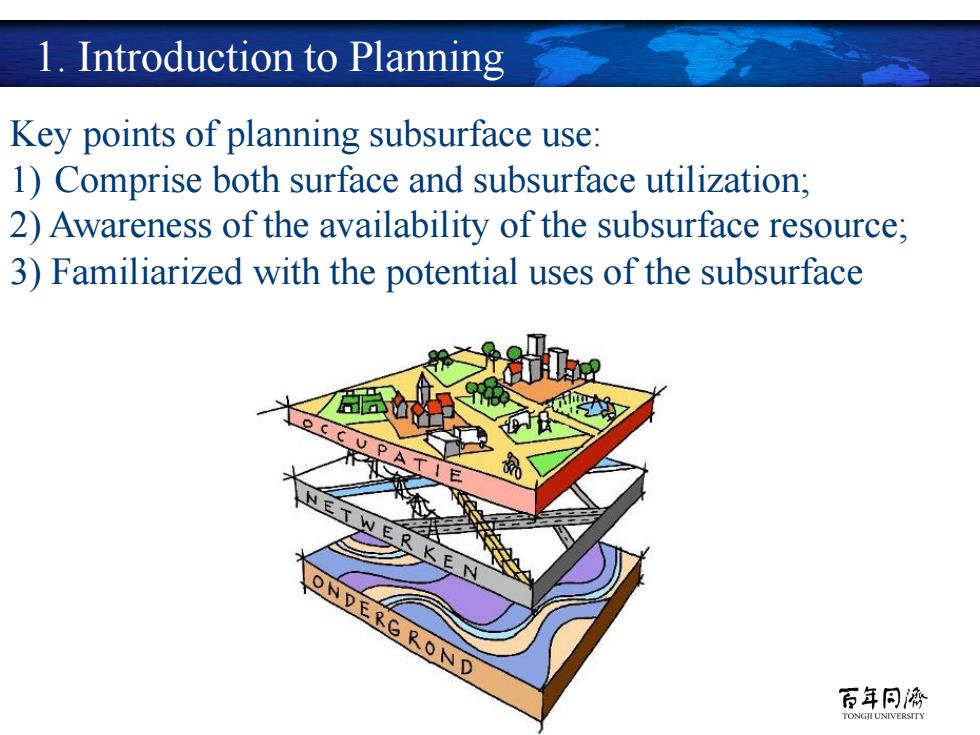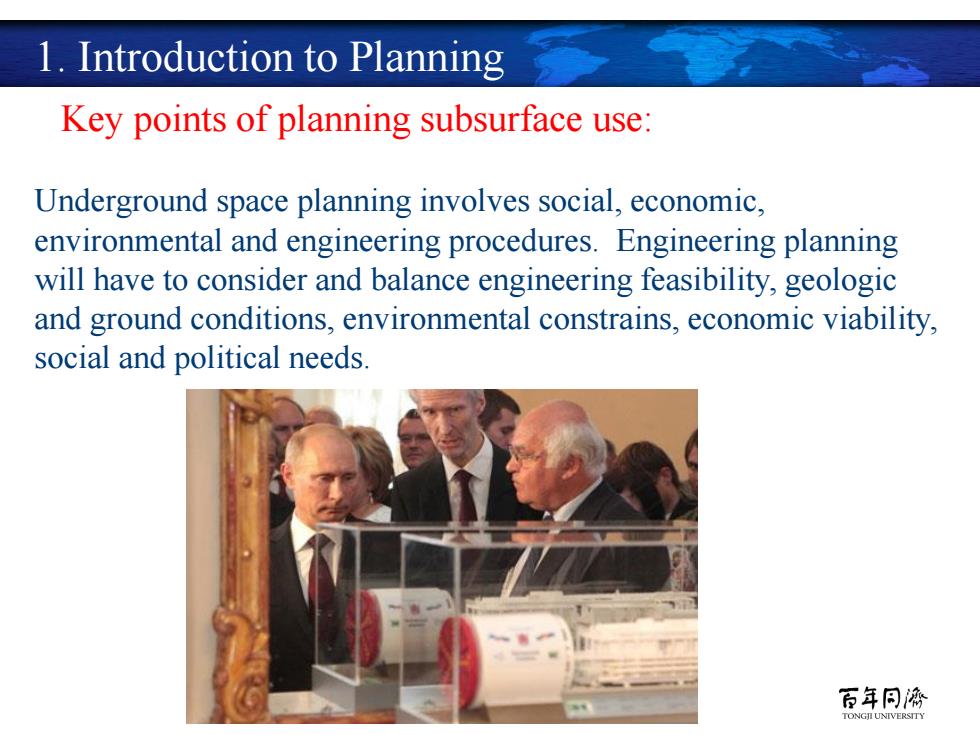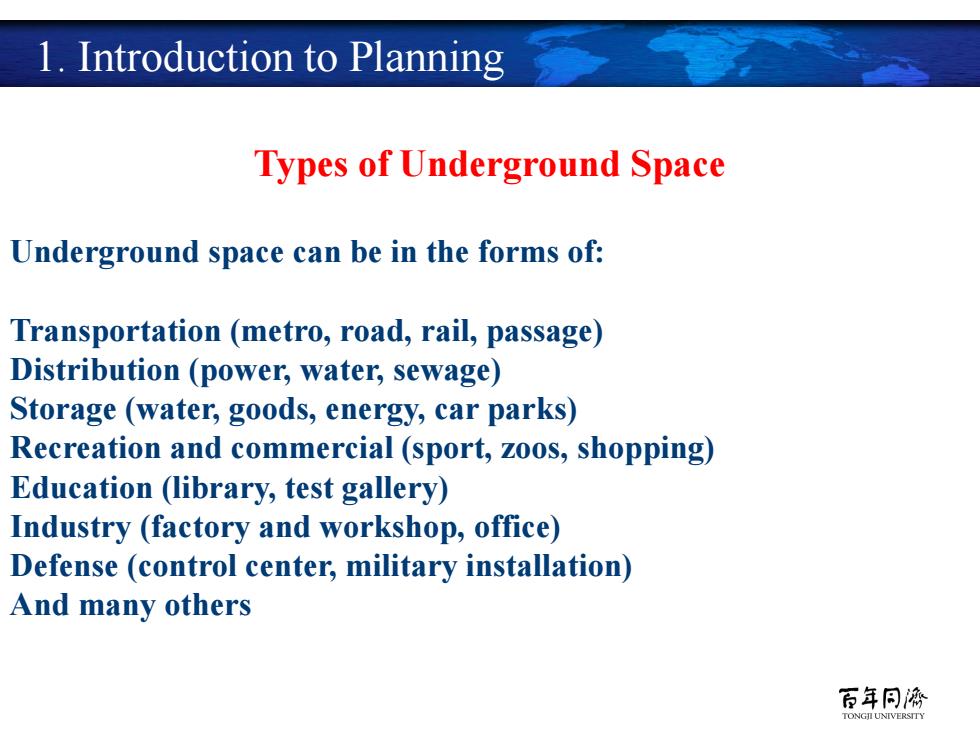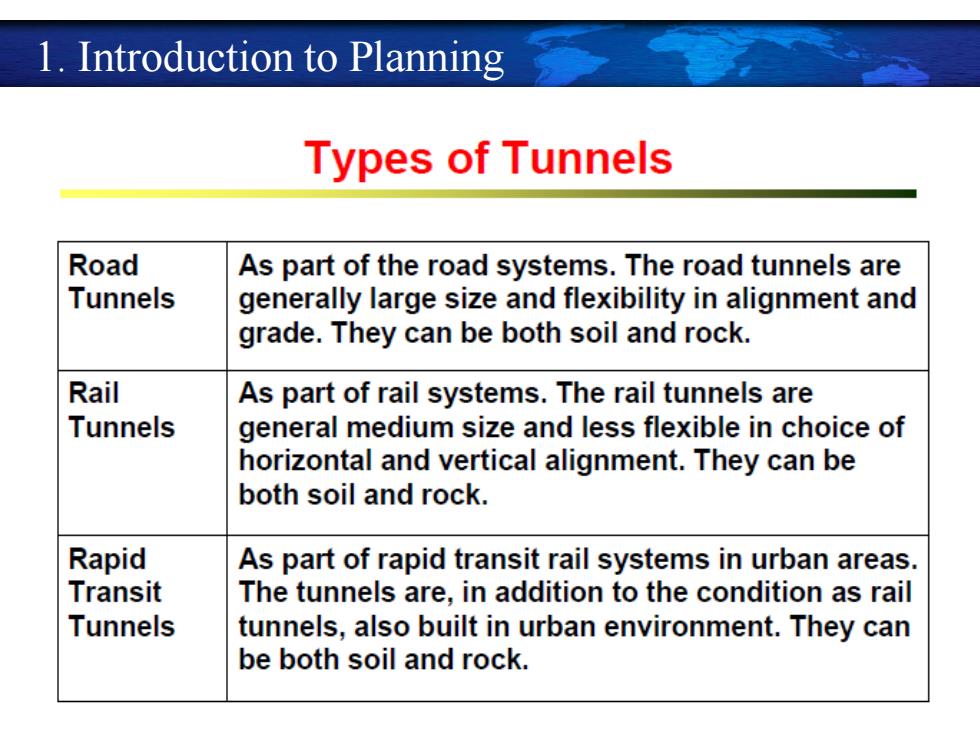
1.Introduction to Planning Key points of planning subsurface use: 1)Comprise both surface and subsurface utilization; 2)Awareness of the availability of the subsurface resource; 3)Familiarized with the potential uses of the subsurface ONDERG ROND 百年同桥 TONGII UNIVERSTTY
17 1. Introduction to Planning Key points of planning subsurface use: 1) Comprise both surface and subsurface utilization; 2) Awareness of the availability of the subsurface resource; 3) Familiarized with the potential uses of the subsurface

1.Introduction to Planning Key points of planning subsurface use: Underground space planning involves social,economic, environmental and engineering procedures.Engineering planning will have to consider and balance engineering feasibility,geologic and ground conditions,environmental constrains,economic viability, social and political needs 百年同濟 TONGILUNIVERSITY
18 Underground space planning involves social, economic, environmental and engineering procedures. Engineering planning will have to consider and balance engineering feasibility, geologic and ground conditions, environmental constrains, economic viability, social and political needs. 1. Introduction to Planning Key points of planning subsurface use:

1.Introduction to Planning Types of Underground Space Underground space can be in the forms of: Transportation(metro,road,rail,passage) Distribution(power,water,sewage) Storage (water,goods,energy,car parks) Recreation and commercial (sport,zoos,shopping) Education (library,test gallery) Industry (factory and workshop,office) Defense (control center,military installation) And many others 百年同濟
19 Types of Underground Space Underground space can be in the forms of: Transportation (metro, road, rail, passage) Distribution (power, water, sewage) Storage (water, goods, energy, car parks) Recreation and commercial (sport, zoos, shopping) Education (library, test gallery) Industry (factory and workshop, office) Defense (control center, military installation) And many others 1. Introduction to Planning

1.Introduction to Planning Types of Tunnels Road As part of the road systems.The road tunnels are Tunnels generally large size and flexibility in alignment and grade.They can be both soil and rock. Rail As part of rail systems.The rail tunnels are Tunnels general medium size and less flexible in choice of horizontal and vertical alignment.They can be both soil and rock. Rapid As part of rapid transit rail systems in urban areas. Transit The tunnels are,in addition to the condition as rail Tunnels tunnels,also built in urban environment.They can be both soil and rock
20 1. Introduction to Planning